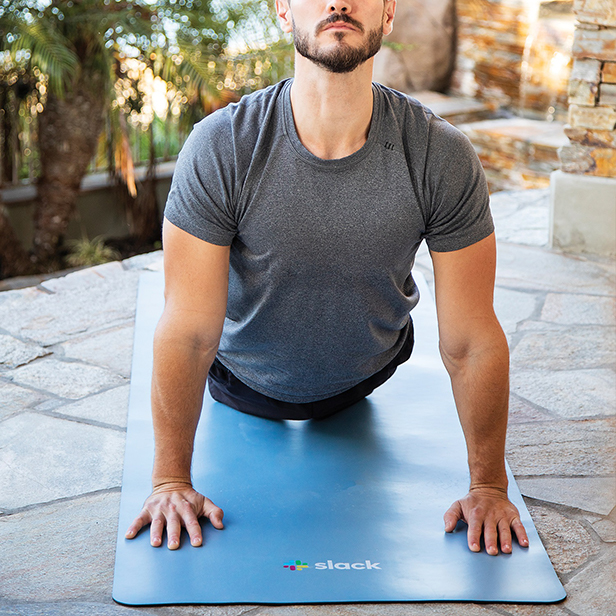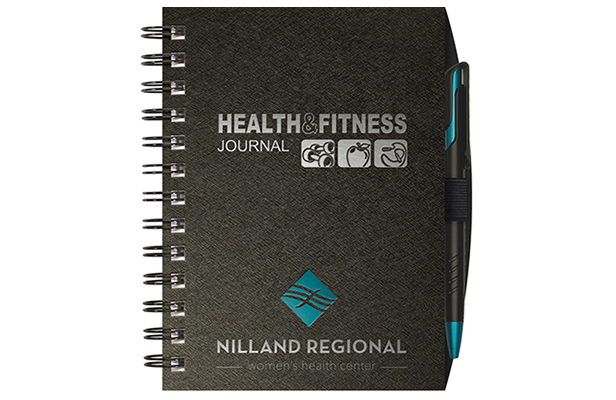August 12, 2020
Target the Telehealth Market
With people still hesitant about heading back to care facilities, virtual appointments pose healthy sales opportunities for promo.
As the pandemic began its march across North America this spring, a convenient healthcare service that had been gaining in popularity over the last few years is in the spotlight, which may present sales opportunities for promotional product distributors.
Telehealth, a form of medical care in which patients can meet with health professionals over video conferencing instead of in person, became the medium of choice for wellness consultations in recent months as facilities were forced to close and patients began virtual visits from the comfort of their homes. Forrester Research predicts that virtual healthcare will have exceeded 1 billion interactions by the end of 2020.
By March and April this year, 71% of patients surveyed by telehealth provider Doctor.com had considered telehealth services; half had already used the service. Even before the pandemic, in the first months of 2020, telehealth use was up 33% from the same time in 2019. It’s expected to be worth $185.6 billion by 2026. In early August, the Trump administration announced it would be expanding telehealth services permanently for those on Medicare in rural communities, which have long suffered from a lack of convenient healthcare access.
Virtual visits were convenient during mass closures, when it was often the only way to speak with healthcare providers about common ailments, elective services and general queries. But now, even after many facilities have been allowed to reopen with strict distancing and sanitation measures in place, patients recognize the benefits: flexible appointment hours, no drive time, no waiting rooms and no risk of possible disease transmission from other visitors and employees. At the recent Value-Based Care Summit, a virtual medical conference held in June, 96% of attendees said they expect telehealth to continue to grow even after the pandemic subsides.
Dr. Leada Malek, a San Francisco-based sports specialist and physical therapist, has gone completely over to telehealth in the past two months. She felt compelled to start offering her expertise where she could after being furloughed in the spring. She’s always wanted to go into business for herself, she says, and starting off with little overhead seemed like a good way to do it.

All-purpose dumbbells (BPDB007) from Best Promotions Gift Corp. (asi/40320) are perfect for virtual physical therapy sessions.
Malek built a website and started advertising her telehealth services over social media and paid advertising in early June. By early August, she was working with more than 20 new patients over Zoom, mostly people ages 25 to 40 from the Bay Area tech industry who won’t be going back to the office until later this year or even early 2021.
“It’s been a positive experience,” she says. “They feel safe, and they’re able to move at home. They’re not going back to the office, which means they’re not stopping at the gym after work. It’s a lot of home fitness. Unless you’re an avid gym-goer, you’re not seeking it right now.”

A lightweight yoga mat (MYOGA02) from Terry Town (asi/90913) makes for a great gift for new PT telehealth patients.
For Dr. Marina Kurian, MD, a bariatric surgeon in New York City, the move to all telehealth earlier this year was a smooth one since she’s been offering it for the past several years over the Virtual Health Partners platform. “Patients didn’t want to drive in to the city, especially since there were a lot of cases here,” she says. “Others had moved out in recent months and didn’t want to make the drive from the tri-state area (New York, New Jersey and Connecticut), so they decided to stick with telehealth, even when I started seeing people in the office again.”
While Kurian doesn’t see telehealth completely replacing in-person care (full physical exams and surgeries are notable exceptions), general wellness, exercise sessions and nutritional consultations are ideal fits for video conferencing, especially for those patients with limited mobility.

Consider a nutrition/fitness journal (EX-700C) from Journalbooks/Timeplanner Calendars (asi/91340) for telehealth patients in weight loss programs.

Pitch a performance polo (TT51W) from Prime Line (asi/79530) for clinic staff conducting virtual consultations. Upsell with complementary scrubs for nurses and doctors, and performance apparel for patients.
Among the equipment that makes for a quality physical therapy session over telehealth, says Malek, are body weights, resistance bands, yoga mats and blocks, dumbbells and exercise balls. Malek also recommends patients dress in activewear and comfortable shoes. Meanwhile, Kurian says she’d like to see more blood pressure cuffs, scales and home finger sticks for home use. Any of these items would make for great welcome kits delivered to the homes of new telehealth patients, along with exercise/nutrition journals, workout towels, wireless earbuds for use during appointments, branded folders for important patient documents and writing instruments for taking notes.

Promosmart (asi/80026) offers this portable monitor for blood pressure, pulse and heart rate (I3365), which can fit into welcome kits for patients in many healthcare specialties.
“People will continue to want a safer, viable healthcare option,” says Malek. “Telehealth can be done with the same efficiency as going to the doctor’s office, so they’ve implemented it into their routine and want to continue with it in the future.”

Product Hub
Find the latest in quality products, must-know trends and fresh ideas for upcoming end-buyer campaigns.
